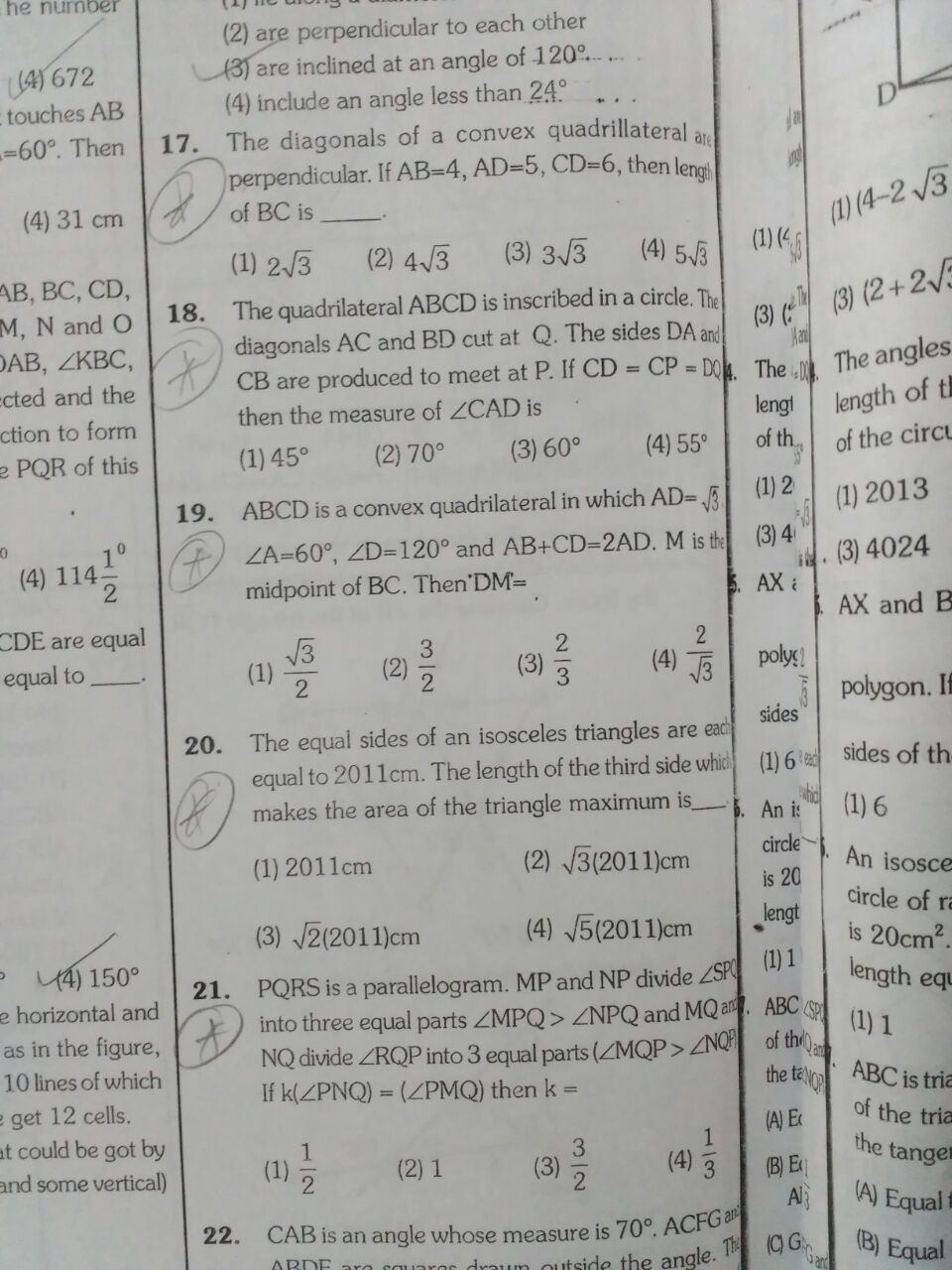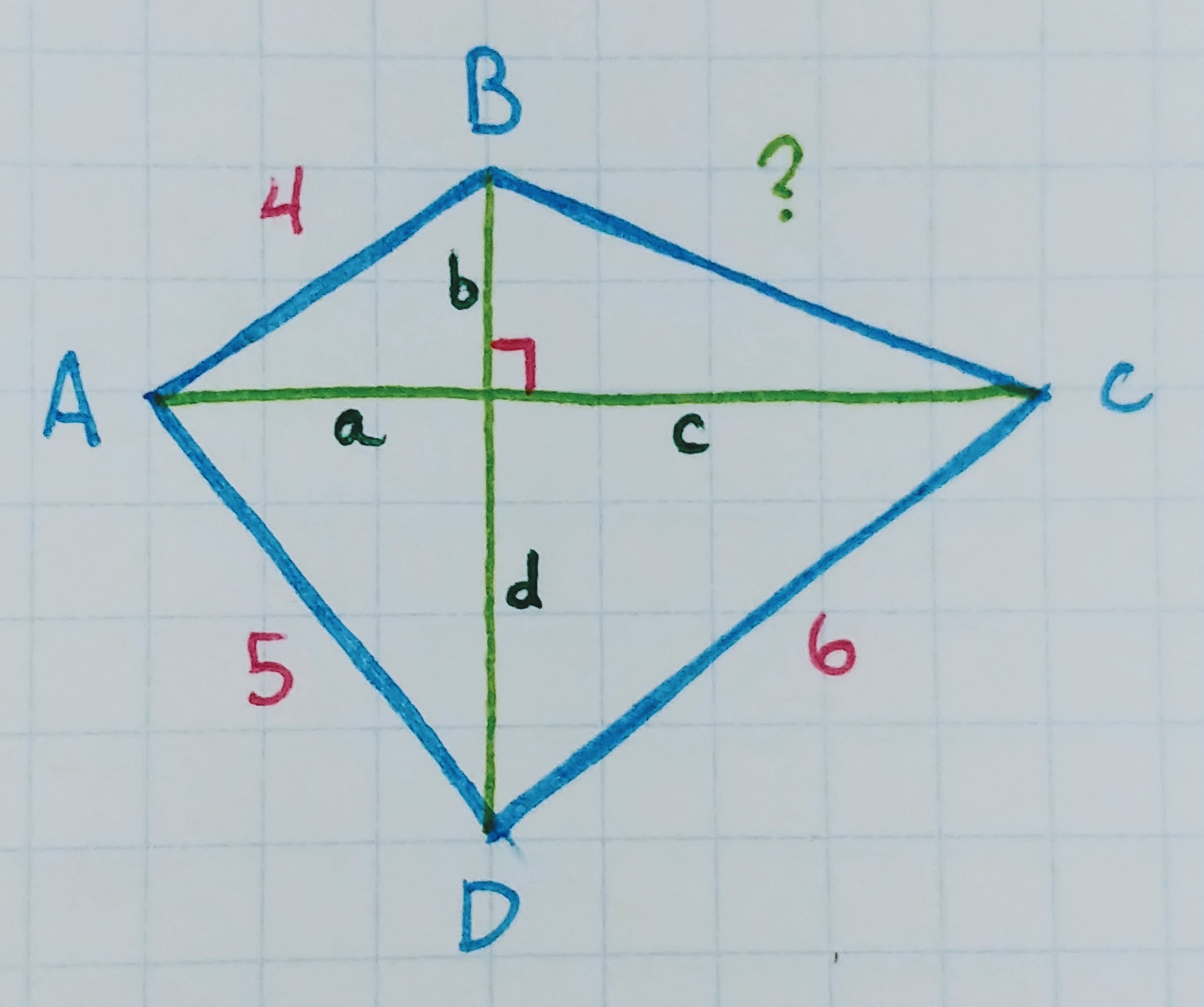Please solve q 17?

1 Answer
Explanation:
We assume the quadrilateral has its vertices in alphabetical order (i.e. it can be called
Since the diagonals of
Label the interior sides as

By the Pythagorean theorem, we get the following 4 equations:
(1)
#a^2+b^2color(white)(" "+c^2+d^2)=4^2#
(2)#color(white)(a^2+)b^2+c^2color(white)(" "+d^2)=(BC)^2#
(3)#color(white)(a^2+b^2+)c^2+d^2=6^2#
(4)#a^2color(white)(" "+b^2+c^2)+d^2=5^2#
Adding equations (1) + (3) gives
(5)
#a^2+b^2+c^2+d^2 = 4^2 + 6^2#
while adding (2) + (4) gives
(6)
#a^2+b^2+c^2+d^2 = (BC)^2 + 5^2#
The left-hand sides of (5) and (6) are equal. This means their right hand sides must also be equal:
(7)
#4^2+6^2 = (BC)^2 + 5^2#
Equation (7) shows us something very useful: in a convex quadrilateral with perpendicular diagonals, the two pairs of squared opposite sides have equal sums.
We now have an equation where
#16+36 = (BC)^2 + 25#

